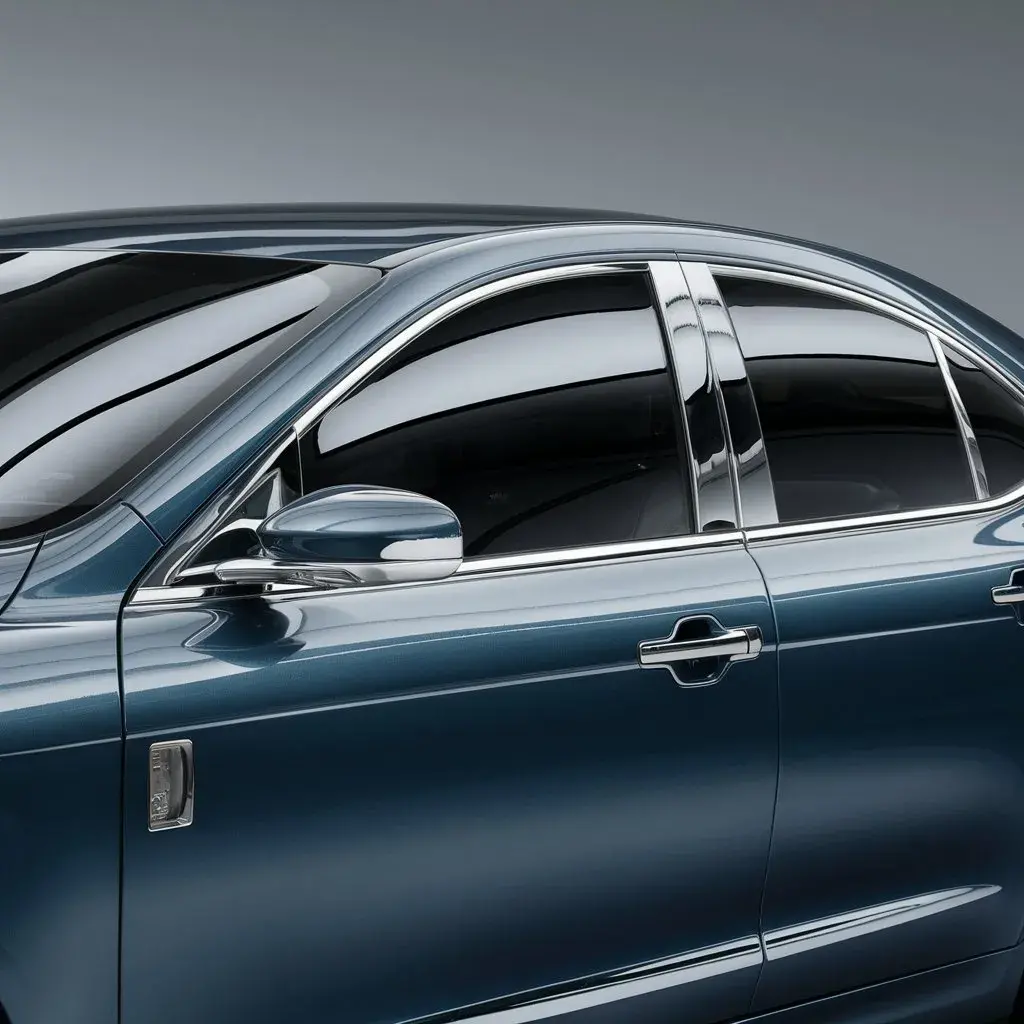
Metalized window tinting utilizes a sophisticated sputtering process where metals such as titanium, stainless steel, or silver are deposited onto film in ultra-thin layers. This technique, performed in a controlled vacuum environment, ensures a high degree of precision and uniformity, yielding a product that not only enhances the aesthetic appeal of glass but significantly improves its functional properties. Among these are effective rejection of solar heat, robust UV filtration, and a marked increase in shatter resistance, crucial for both vehicle and architectural applications, including auto glass tinting. The integration of metal particles also boosts durability and provides a reflective finish that offers privacy while maintaining visibility from the inside. As industry standards evolve, the potential applications and enhancements of metalized window tints continue to expand, prompting a closer look at how these technologies could redefine our interaction with natural light and energy consumption.
Crafting Metalized Window Tint
Metalized window tint is produced through a process called sputtering, where thin layers of metal atoms are embedded into the film to enhance its heat reflective properties. This method involves the precise deposition of metals such as nickel, aluminum, or copper onto a substrate film.
The sputtering process is conducted in a vacuum chamber, where the metal target is bombarded with ions that dislodge metal atoms from the target. These atoms then travel across the chamber and condense on the surface of the film.
The control over the deposition process is critical, as it determines the uniformity and density of the metal coating, which are essential for achieving optimal performance in heat reflection and durability. Technicians meticulously monitor the chamber’s conditions, including pressure and temperature, to ensure that the metallization is consistent across the entire batch of film.
This level of precision ensures that every roll of tint produced meets stringent industry standards for quality and performance.
Benefits of Auto Glass Tinting with Metalized Tinting
Understanding the production process of metalized window tint paves the way to appreciating its significant benefits, such as enhanced thermal insulation and superior UV protection. This type of tint is engineered using advanced metallization technology, where micro-thin layers of metal such as titanium, stainless steel, or copper are deposited onto a film base. This results in a highly efficient, durable window coating that significantly enhances vehicle and building windows.
Key advantages of metalized window tinting include:
- Superior Heat Rejection: The metallic layer reflects solar heat rather than absorbing it, maintaining a cooler interior environment without overburdening air conditioning systems.
- Enhanced UV Protection: Metalized tint blocks up to 99% of harmful ultraviolet rays, protecting occupants from skin damage and the interior furnishings from fading.
- Increased Privacy and Security: The reflective property of the metalized film offers greater privacy during the day and adds an extra layer of protection against break-ins, as the film holds shattered glass in place.
- Glare Reduction: It significantly reduces glare from the sun and headlights, enhancing visual comfort for both drivers and building occupants.
These benefits not only enhance comfort but also contribute to energy efficiency and safety, fostering a sense of well-being among users.
In the realm of solar management, metalized window tint stands as a modern-day alchemist, transforming raw sunlight into a refined spectrum.
Through the meticulous art of sputtering, this film merges the resilience of metals with the clarity of glass, shielding interiors from the sun’s harsh narrative.
It not only repels the unwanted thermal and ultraviolet tales but also enhances the privacy and security of the sanctuaries within, making auto glass tinting an essential protagonist in the epic of environmental and personal protection.